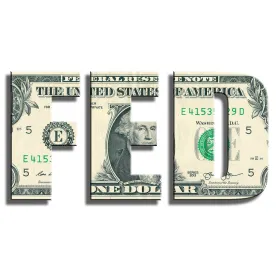COVID-19 has rendered companies of all sizes in need of liquidity. However, the federal relief programs previously enacted have focused on small businesses or large companies, with mid-size companies often excluded from federal relief. To help narrow this gap, the Federal Reserve, with the approval of the Treasury Secretary, announced on April 9, 2020, via a press release, the details of the Main Street Lending Program (the Program). The Program will utilize $75 billion of capital made available from the U.S. Department of the Treasury (the Treasury), using funds appropriated for the Exchange Stabilization Fund under section 4027 of the Coronavirus Aid, Relief and Economic Security Act (the CARES Act). When leveraged by the Federal Reserve, this capital provides up to $600 billion in liquidity to participating lenders. Furthermore, the press release recognizes that the Program is still being finalized and that the design is open to comment through the Federal Reserve website until April 16, 2020. The Federal Reserve has not yet announced when the Program will be operational. Set forth below is an overview of the Program. Robinson+Cole will continue to monitor regulations and guidance from the Treasury and the Federal Reserve on this topic as both become available.
MAIN STREET LENDING PROGRAM
On April 9, 2020, under authorization from Section 4003(c)(3)(D)(ii) of the CARES Act, the Federal Reserve created the Program, providing small and mid-sized businesses access to liquidity. The Federal Reserve will provide up to $600 billion in capital to participating lenders that will provide qualifying loans to eligible businesses. The Treasury will provide $75 billion in equity to backstop the facility. The Program requires the establishment of two new loan facilities: (i) the Main Street New Loan Facility (MSNLF), which is intended to help facilitate new loans to businesses; and (ii) the Main Street Expanded Loan Facility (MSELF), which is intended to help facilitate the extension of already existing loans. Pursuant to the Program, participating banks will retain a 5% share of the loan and will immediately sell the remaining 95% back to the Federal Reserve through a special purpose vehicle (SPV) created by the Federal Reserve. The Program may have the effect of bridging the gap in the CARES Act between newly-enacted or expanded SBA loan programs, including the Paycheck Protection Program (the PPP) and Economic Injury Disaster Loans (EIDLs) and the Federal Reserve’s credit facilities designed to support credit to large employers. (For more information on the PPP and EIDLs, see our Primer, FAQ on EIDLs, FAQ on the PPP and article U.S. Small Business Administration Affiliation Rules and Their Application to the Payroll Protection Program.) The loans are intended to be unsecured, so borrowers and junior secured lenders might consider requiring senior secured lenders making these loans to existing borrowers to affirmatively disclaim any security interests for these loans.
ELIGIBILITY
The Program provides support for eligible small and mid-sized businesses that were in good financial standing before the COVID-19 epidemic with either a new loan under the MSNLF or an increase in size of an existing loan under the MSELF. Businesses may only participate in one of the two Program facilities. General eligibility requirements to participate in the Program are as follows:
-
The business must be created or organized in the U.S. or under the laws of the U.S. with significant operations in, and a majority of its employees based in, the U.S.
-
The business must have either (a) fewer than 10,000 employees, or (b) less than $2.5 billion in 2019 annual revenue.
-
The business must be able to attest that it requires financing due to the exigent circumstances presented by the COVID-19 pandemic, and that it is solvent. [1]
-
The business must make “reasonable efforts” to maintain payroll and retain workers. [2]
-
The business must comply with all applicable restrictions that apply to direct loan programs under the CARES Act, i.e., compensation, stock repurchase, and dividend restrictions.
As of the date of this alert, the Treasury and the Federal Reserve have yet to issue more detailed guidance on eligibility standards.
TERMS AND CONDITIONS
Important terms and conditions with respect to loans extended under the Program are as follows:
-
All loans issued under the Program will have a four-year maturity.
-
The minimum size of all loans issued under the Program is $1 million.
-
Maximum loan size for new loans under the MSNLF is the lesser of (a) $25 million, or (b) an amount that, when added to the borrower’s existing outstanding and committed but undrawn debt, does not exceed four times 2019 EBITDA.
-
Maximum loan size for the upsized tranche of an existing loan under the MSELF is the lesser of (a) $150 million, (b) 30% of the borrower’s existing outstanding and committed but undrawn bank debt, or (c) an amount that, when added to the borrower’s existing outstanding and committed but undrawn debt, does not exceed six times the borrower’s 2019 EBITDA.
-
The interest rate for all loans under the Program is an adjustable rate equal to the Secured Overnight Financing Rate (SOFR), plus 250-400 basis points. [3]
-
Payments of principal and interest on all loans under the Program are deferred for one year.
-
All loans under the Program may be prepaid with no penalty.
-
There is a fee for loan origination/upsizing and servicing equal to 100 basis points of the principal amount of the eligible new loan or amount of the upsized tranche, respectively.
Further terms and conditions of the Program are listed in the term sheet for the MSNLF and the term sheet for the MSELF both posted to the Federal Reserve’s April 9, 2020, press release announcing the Program. Please note that both term sheets specify that the Board of Governors of the Federal Reserve System (the Board) and Secretary of the Treasury may make adjustments to the terms and conditions described therein, with any such changes to be announced on the Board's website, which could, among other things, modify eligibility and/or loan requirements.
ENDNOTES
[1] The Federal Reserve is prohibited from lending to companies that are already in bankruptcy proceedings.
[2] The Program does not set specific levels of employment or wage amounts that must be maintained and/or achieved.
[3] The SOFR is currently 0.01%, but was previously over 1% before the Federal Open Market Committee (FOMC) lowered rates on March 14, 2020, and prior to that was over 1.5% before rates were lowered by the FOMC on March 3, 2020.








 />i
/>i

